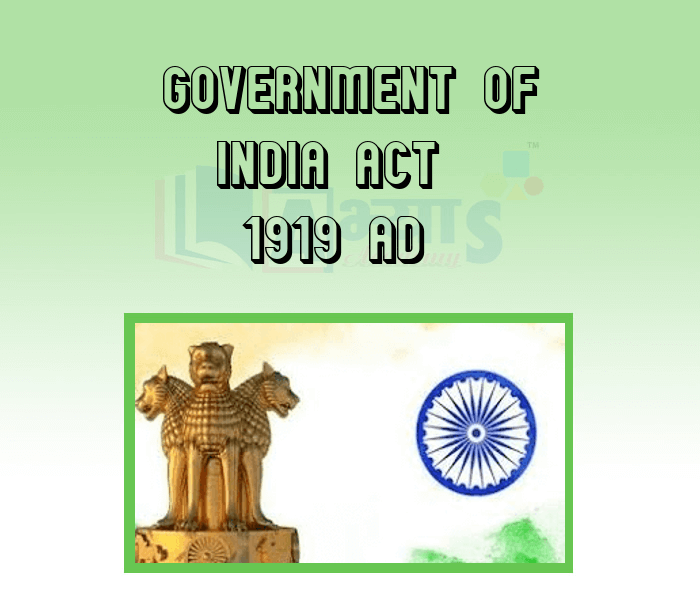Government of India Act 1919 AD











Government of India Act 1919
Government of India Act 1919 (Mont-Ford Reform)
This act is known as the 'Montague Chelmsford Reform Act' Montague was the then Secretary of India and Chelmsford was the then Viceroy and Governor General of India On 20 August 1917. the British Government declared for the first time that its purpose was to establish a responsible government in India. The Government of India Act was passed on 23 December 1919. Its major provisions were-
Act of 1919
Reserved subjects such as revenue, justice, finance, police etc. Transferred subjects like local self government, education and health etc.
By which act was Dyarchy established in the provinces ? | |||
| Right Option : D | |||
| View Explanation | |||
Which of the following act is also known as Mont-Ford Reform ? | |||
| Right Option : C | |||
| View Explanation | |||
Which of the following are correct : (a) There was a provision for constitution of Public Service Commission under the 1919 Act. (b) Public Service commission was formed in 1926 on the recommendation of the Lee Commission. | |||
| Right Option : C | |||
| View Explanation | |||
Students / Parents Reviews [10]
Abhyas is a complete education Institute. Here extreme care is taken by teacher with the help of regular exam. Extra classes also conducted by the institute, if the student is weak.

Om Umang
10thIt was a good experience with Abhyas Academy. I even faced problems in starting but slowly and steadily overcomed. Especially reasoning classes helped me a lot.

Cheshta
10thOne of the best institutes to develope a child interest in studies.Provides SST and English knowledge also unlike other institutes. Teachers are co operative and friendly online tests andPPT develope practical knowledge also.

Aman Kumar Shrivastava
10thMy experience was very good with Abhyas academy. I am studying here from 6th class and I am satisfied by its results in my life. I improved a lot here ahead of school syllabus.

Ayan Ghosh
8thAbout Abhyas metholodology the teachers are very nice and hardworking toward students.The Centre Head Mrs Anu Sethi is also a brilliant teacher.Abhyas has taught me how to overcome problems and has always taken my doubts and suppoeted me.

Shreya Shrivastava
8thIt was good as the experience because as we had come here we had been improved in a such envirnment created here.Extra is taught which is beneficial for future.

Eshan Arora
8thMy experience with Abhyas academy is very good. I did not think that my every subject coming here will be so strong. The main thing is that the online tests had made me learn here more things.

Hiya Gupta
8thMy experience with Abhyas is very good. I have learnt many things here like vedic maths and reasoning also. Teachers here first take our doubts and then there are assignments to verify our weak points.

Shivam Rana
7thAbhyas Methodology is very good. It is based on according to student and each child manages accordingly to its properly. Methodology has improved the abilities of students to shine them in future.

Manish Kumar
10thBeing a parent, I saw my daughter improvement in her studies by seeing a good result in all day to day compititive exam TMO, NSO, IEO etc and as well as studies. I have got a fruitful result from my daughter.
